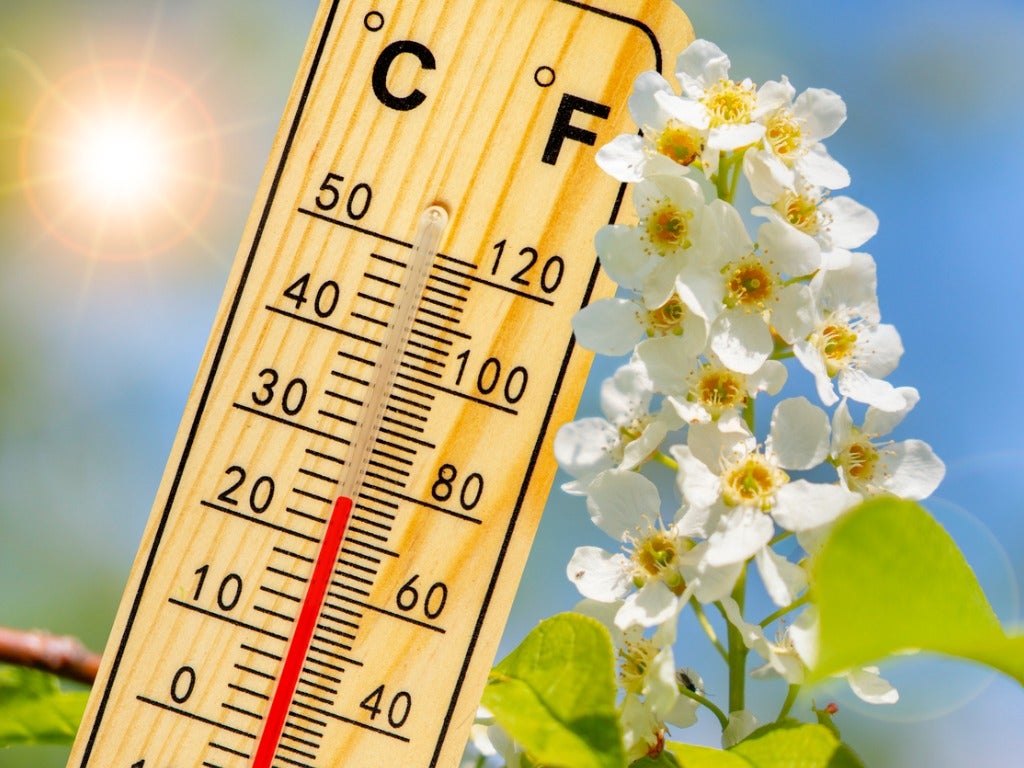Why Thermogenic Plants Produce Heat


Don't laugh if a non-gardening friend asks, “Do plants produce heat?” You may think plants are poikilotherms, lifeforms whose internal temperatures are dictated by the environment. However, some plants do produce heat, and many have adaptations to regulate their internal temperatures.
Skunk Cabbage Thermogenesis
Skunk cabbage (Symplocarpus foetidus) is one plant that can stay toasty warm. Named for the smell emitted from bruised leaves, the skunk cabbage is one of the first plants to emerge in early spring. As it pushes its way up through the snow, this plant's ability to generate heat is a survival tactic.
For nearly two weeks, the spadix (spike of flowers) is able to maintain an internal temperature which is considerably warmer than the outside environment. Capable of reaching temperatures as high as 71 degrees F. (22 C.), the skunk cabbage flower is well protected from frost and freeze damage.
It's believed thermogenic plants, like the skunk cabbage, have a reproductive advantage. After all, a warmer flower develops faster, emits more fragrance and CO2 to attract pollinators, plus provides a cozy environment for those insects.
In addition to skunk cabbage, other members of the arum family are also thermogenic. These include dead horse arum (Helicodiceros muscivorus) and elephant yam (Amorphophallus paeoniifolius). Some members of the nymphaea species, such as the Santa Cruz waterlily, have also demonstrated the ability to produce heat when blooming.
Another Reason for Thermogenesis Plants
As gardeners, it is hard to overlook the importance of sunlight for our plants. Through the process of photosynthesis, plants convert sunlight and carbon dioxide into glucose. This sugar is the energy source which allows our plants to grow and reproduce.
As part of a long chain of reactions associated with photosynthesis, the enzyme RuBisCO (ribulose 1,5-biphosphate carboxylase) helps change carbon dioxide into sugar. As important as carbon dioxide fixation is for plant growth, it's limited by the temperature range in which RuBisCO is functional.
Sign up for the Gardening Know How newsletter today and receive a free copy of our e-book "How to Grow Delicious Tomatoes".
Researchers believe many plants are able to regulate their internal temperature to keep RuBisCo at an optimal temperature. Although they are not heat-producing plants, crops such as pineapple, tomato, lettuce, and cotton can maintain internal temperatures that differ from ambient ones. Pine and oak tree leaves have also demonstrated the ability to thermoregulate.
In these plants, leaf construction plays a major role in thermoregulation. Traits like leaf thickness, evaporation rates, and the ability to reflect sunlight all help plants stay cool in warm weather and warmer when it's cold.
So next time your friends ask you this odd gardening question, you can impress them with your knowledge of plants that produce heat and those which have thermoregulation adaptations.

Laura Miller has been gardening all her life. Holding a degree in Biology, Nutrition, and Agriculture, Laura's area of expertise is vegetables, herbs, and all things edible. She lives in Ohio.